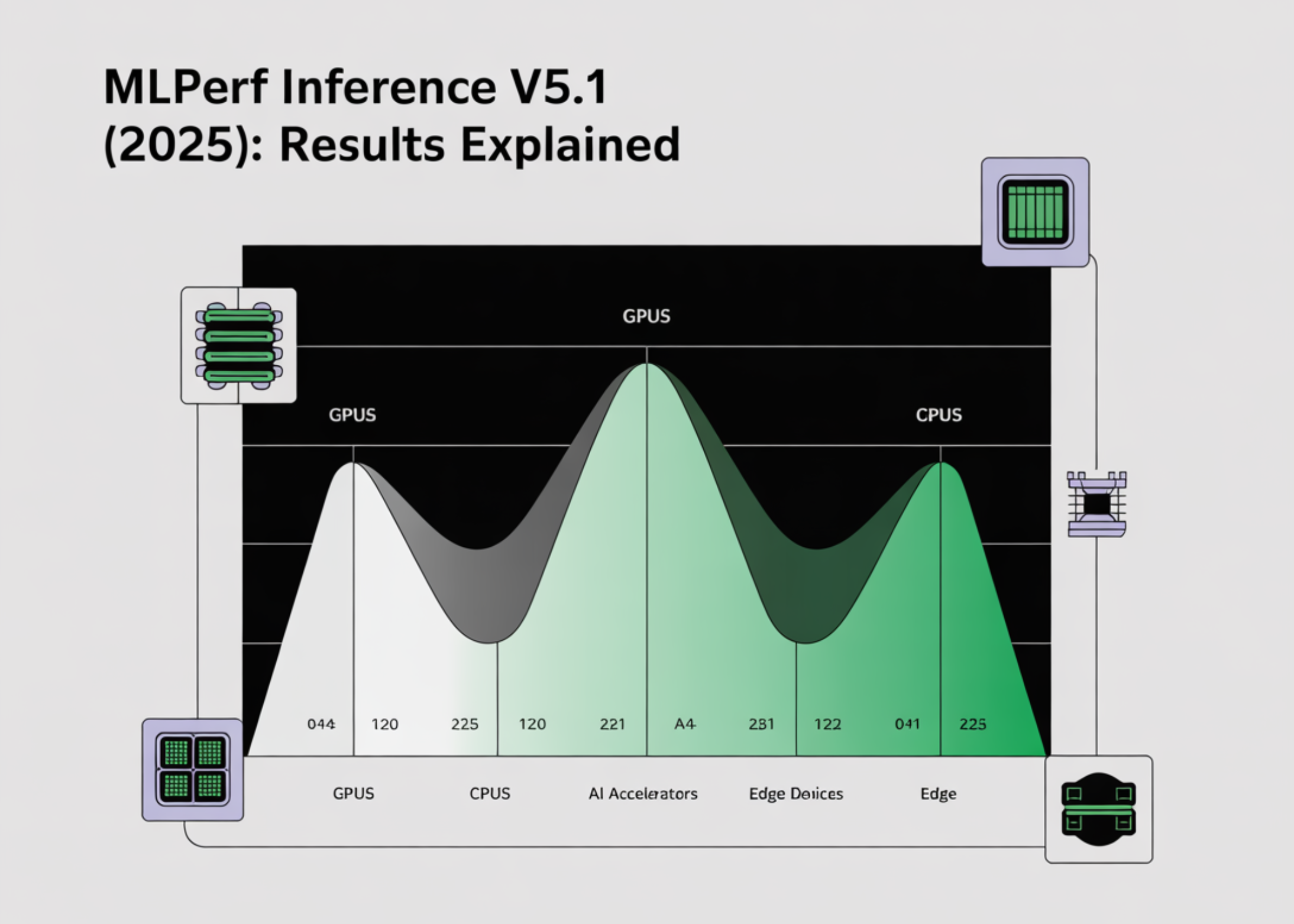
MLPerf Inference v5.1: Key Updates and Insights for AI Performance Evaluation
The latest release of MLPerf Inference, version 5.1, has provided significant updates that enhance the evaluation of AI performance across various hardware platforms. Announced on September 9, 2025, this update reflects a commitment to maintaining architectural neutrality while expanding the scope of benchmarking for GPUs, CPUs, and AI accelerators.
Understanding MLPerf Inference
MLPerf Inference measures the speed at which a complete system, encompassing hardware, runtime, and serving stack, executes fixed, pre-trained models under strict latency and accuracy constraints. Results are categorized into Datacenter and Edge suites, utilizing standardized request patterns generated by LoadGen. This approach ensures reproducibility and fairness in comparisons.
There are two main divisions within MLPerf Inference:
- Closed Division: This division fixes both the model and preprocessing, allowing for direct comparisons between systems.
- Open Division: Here, model changes are permitted, although they may not facilitate direct comparability.
Furthermore, configurations are marked with availability tags such as Available, Preview, and RDI (research/development/internal) to indicate whether they are shipping products or experimental setups.
Notable Changes in Version 5.1
The transition from version 5.0 to 5.1 introduces three modern workloads and expands interactive serving capabilities:
- DeepSeek-R1: This is the first reasoning benchmark introduced in MLPerf.
- Llama-3.1-8B: This workload replaces the previous GPT-J for summarization tasks.
- Whisper Large V3: This model is now utilized for automatic speech recognition (ASR).
The latest round of submissions recorded participation from 27 submitters, marking the first appearances of several new technologies including AMD Instinct MI355X, Intel Arc Pro B60 48GB Turbo, NVIDIA GB300, RTX 4000 Ada-PCIe-20GB, and RTX Pro 6000 Blackwell Server Edition. Additionally, the interactive scenarios have been broadened to capture agent and chat workloads, moving beyond the constraints of a single model.
Conclusion
MLPerf Inference v5.1 represents a significant evolution in evaluating AI performance, providing clearer insights and broader applicability across various platforms. As the landscape of artificial intelligence continues to evolve, such benchmarks are crucial for both developers and organizations aiming to leverage AI technologies effectively.
Rocket Commentary
The release of MLPerf Inference 5.1 marks a crucial step in refining AI benchmarking standards, but while it promotes architectural neutrality, it also underscores the need for a broader, more inclusive approach to AI performance evaluation. The commitment to reproducibility and fairness is commendable, yet the industry must not overlook the implications of standardized testing on innovation. As we strive for AI that is accessible and transformative, we should advocate for benchmarks that also consider real-world applications and ethical implications, ensuring that advancements in performance translate into meaningful benefits for businesses and society at large. The focus should not only be on speed and accuracy but also on the ethical deployment of these technologies in diverse environments.
Read the Original Article
This summary was created from the original article. Click below to read the full story from the source.
Read Original Article